Tianfu Habitat Pavilion opens in Chengdu
The Tianfu Habitat Pavilion, designed by China Southwest Architectural Design and Research Institute (CSWADI), stands as one of the main exhibition venues of the International Horticultural Exhibition 2024 Chengdu. Located on a gently sloping site, the design draws from the city’s cultural heritage and geography, using circular rooftops to shape its architecture and frame the visitor experience.
Rather than dominating the landscape, the low-lying pavilion integrates with the terrain, organizing the program through interlocking courtyards that emphasize Chengdu’s traditions of gathering and shared ritual.
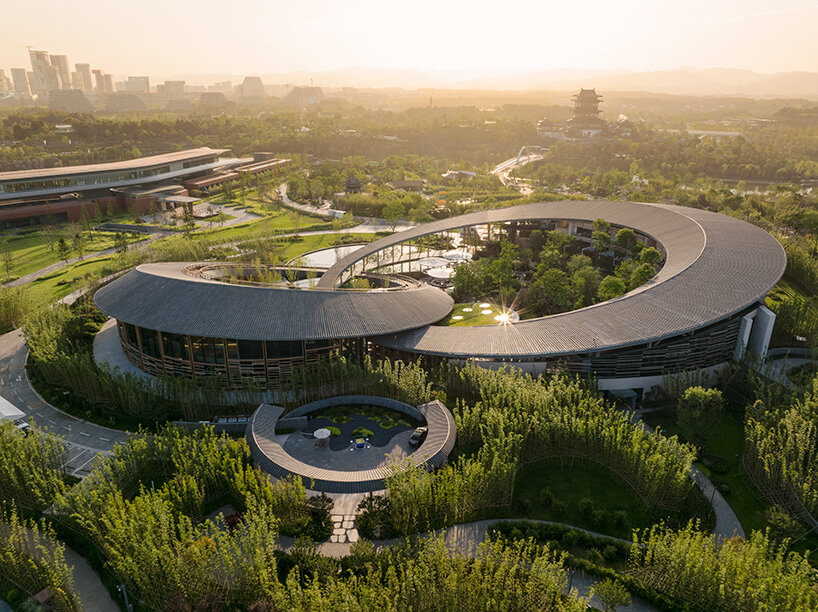
images © Arch-Exist
Circles as Cultural Framework
The circle is central to the Tianfu Habitat Pavilion’s concept, reflecting Chengdu’s cultural identity as well as its natural setting in the Sichuan Basin. Circular geometries — seen in communal dining, tea rituals, and traditional residential layouts — are reinterpreted as architectural devices that structure movement and define zones of activity.
The design is organized into three overlapping rings, each symbolizing a distinct aspect of the city: courtyard, lotus pond, and bamboo hills. These forms create immersive environments that reference both domestic scale and landscape typology, translating familiar cultural symbols into a contemporary setting.
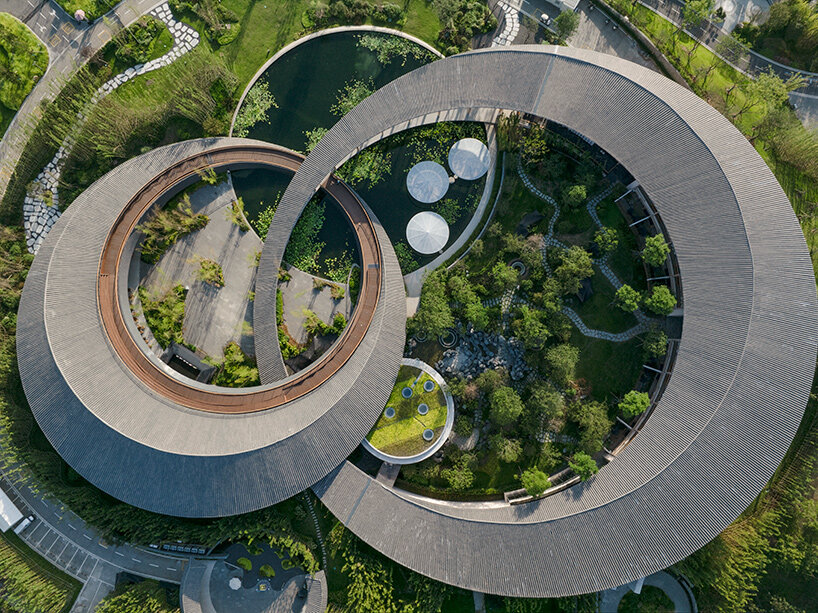
the Tianfu Habitat Pavilion integrates with the hillside in Chengdu
the courtyard
The courtyard is a symbolic element which establishes Chengdu’s Tianfu Habitat Pavilion as an archetype of Western Sichuan residential life. Here, the arrangement accommodates a sequence of experiences — viewing, listening, tasting, and ascending — that layer together cultural traditions with architectural clarity. A fan-shaped exhibition hall, supported by a steel framework, allows flexible configurations for future use. Its ceiling references Sichuan bamboo weaving, expressed through folded aluminum panels that connect interior and exterior spaces with a continuous texture.
Adjacent to the hall, a dual-sided stage provides a platform for Sichuan opera and storytelling. Its open orientation extends performances into the courtyard, allowing audiences to gather indoors or in the open air. Along the perimeter, a bamboo-framed tea room modeled on Chengdu’s historic Heming Teahouse offers visitors the opportunity to sit, drink, and observe performances, reinforcing the social and contemplative role of the courtyard. A gently inclined path rises along the circular edge, inviting visitors to ascend to a rooftop promenade with panoramic views across the site.
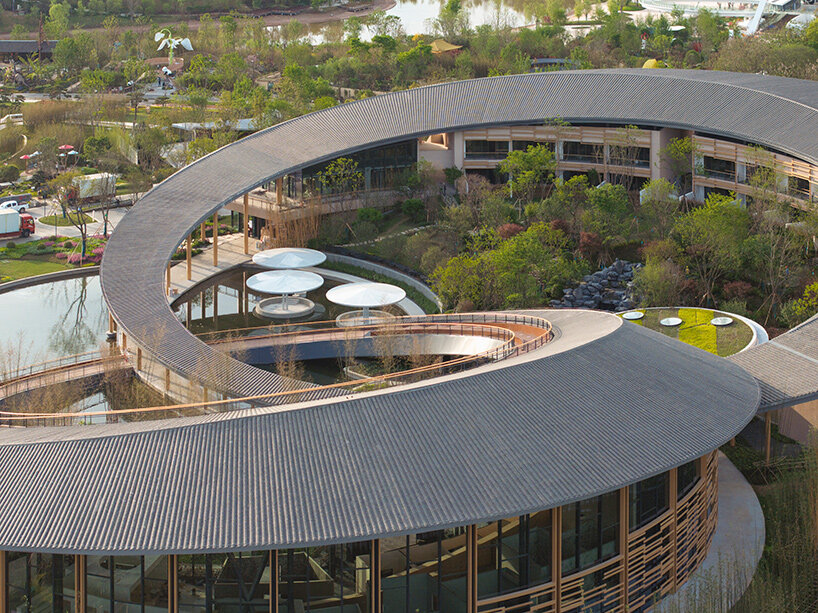
circular geometries organize the pavilion into interconnected courtyards
lotus pond
Water is introduced as a second defining element through the lotus pond, which mirrors the agricultural and cultural significance of Chengdu’s rural landscapes. A slender walkway crosses the water, creating vantage points for observing the pond under shifting light conditions.
Floating platforms, designed as stylized lotus leaves, serve as dining spaces where visitors can gather for hotpot meals, extending the theme of communal life into the aquatic setting. The pond operates both as a symbolic reference and as a functional environment, emphasizing Chengdu’s tradition of linking food, water, and social ritual.
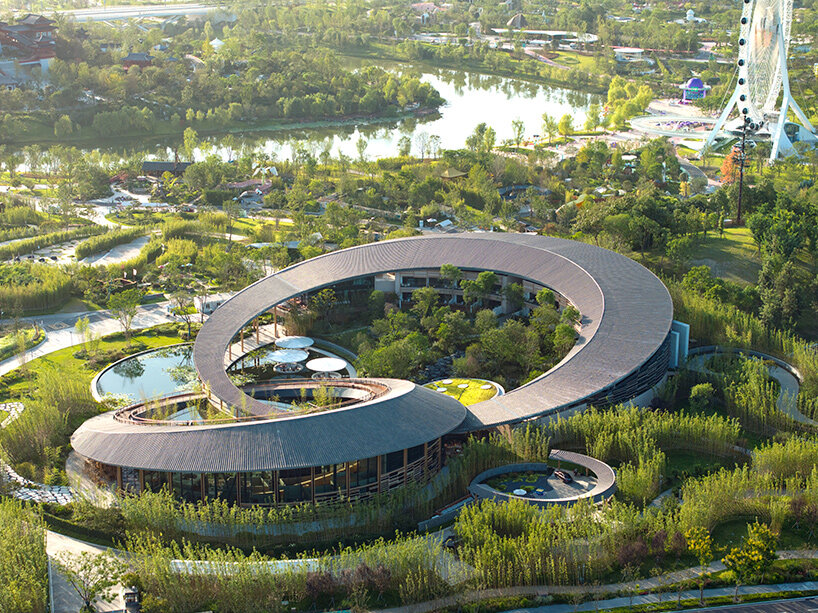
a dual-sided stage extends Sichuan Opera into the open air
Bamboo Hills
Beyond the pond, the pavilion extends into the hillside, where bamboo groves and small inns create a retreat-like environment intended for long-term use after the exhibition concludes. The integration of bamboo as both cultural emblem and ecological material reinforces the local character of the site. Guest rooms open toward dense green slopes, framing uninterrupted views of the forested terrain.
Below, a stream threads its way downhill, feeding a series of outdoor pools and indoor hot springs designed to host year-round bathing rituals. These elements give the pavilion a lasting function, allowing it to evolve into a destination for cultural and ecological tourism in Chengdu.
Through its interlocking geometry, the Tianfu Habitat Pavilion translates the abstract motif of the circle into built form. Each programmatic zone — courtyard, lotus pond, bamboo hills — symbolizes a particular tradition of Chengdu
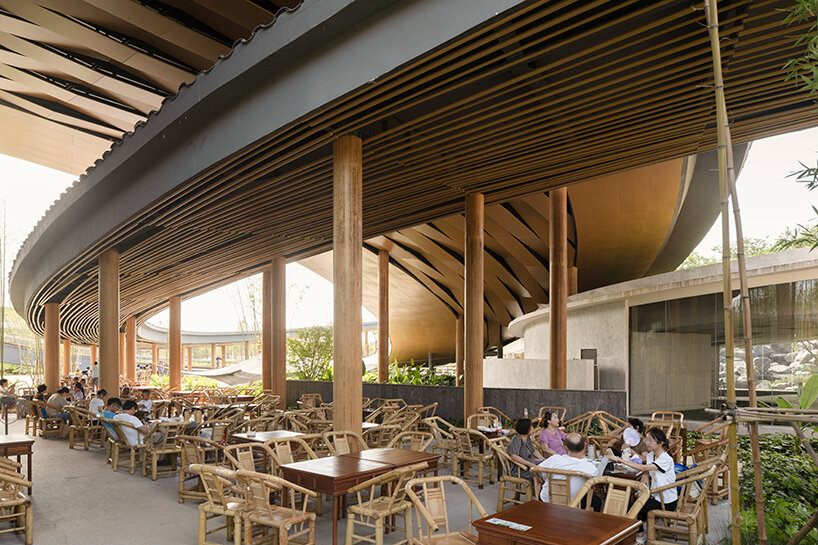
the exhibition hall ceiling recalls traditional bamboo weaving

